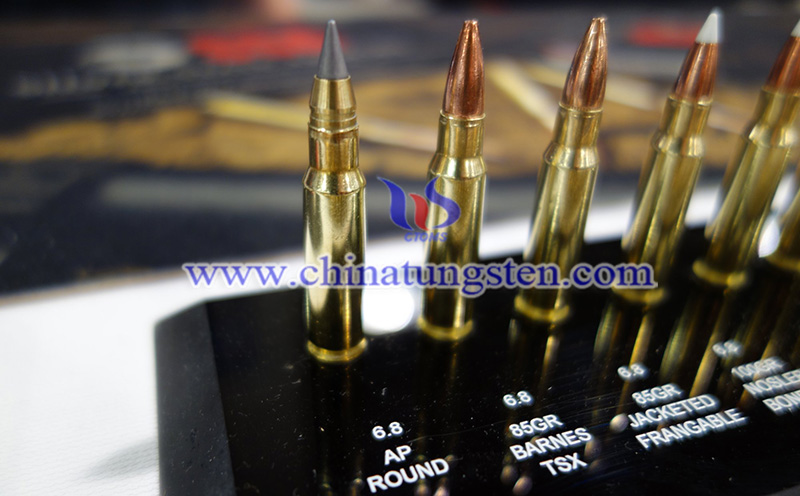If Depleted Uranium Bombs Substituted by Tungsten Alloy Ammunitions of NATO
- Details
- Category: Tungsten's News
- Published on Wednesday, 07 April 2021 21:52
If the depleted uranium bombs substituted by tungsten alloy bombs, would there be ‘genocide’ in Yugoslavia 22 years ago? The North Atlantic Treaty Organization (NATO), led by the US, launched an attack on the Federal Republic of Yugoslavia in the name of ‘protecting human rights’ and dropped a total of 15 tons of depleted uranium ammunition. These bombs, called ‘biochemical weapons’, caused cancer, about 25,000 of people have died of cancer.
The main raw material of the depleted uranium bomb is uranium 238, a by-product. Because it has high density, easy oxidation, high strength, and high hardness, it shows spontaneous sharpness when penetrating objects, and it is widely used to make armor-piercing bullets. However, uranium is a radioactive material, the decay cycle is 4.5 billion years, the radioactive materials could cause cell mutations easily.
It is reported that NATO used a total of 31,000 depleted uranium bombs during the bombing of Yugoslavia. This amount is equivalent to the total depleted uranium bombs used by the United States and other countries against Iraq during the Gulf War. The power is the 1000 times harm of the atomic bombs dropped by the United States on Hiroshima and Nagasaki, Japan in 1945. This led to an 80% increase in the probability of death from malignant diseases in Serbia in 2001, to about 18,000 people.

Compared with the main tungsten alloy bombs currently promoted, the advantages of depleted uranium bombs are mainly reflected in the following aspects, firstly, high quality. This means that the greater the mass of the warhead, the greater the kinetic energy of the same volume of depleted uranium warhead. Second, excellent self-sharpening. In the process of armor piercing, the depleted uranium warhead is not easy to deform, while the ordinary W alloy warhead is easily deformed during the armor piercing process, causing the warhead to become blunt, thereby affecting the armor penetration effect.
Third, easy to oxidize. The depleted uranium warhead is very easy to burn during the armor penetration process, which will cause the armor to melt and accelerate the rate of armor damage. Forth, cheap, because depleted uranium bombs are manufactured using nuclear waste, they are more cost-effective than tungsten armor-piercing bombs.
Although the depleted uranium bomb has excellent armor penetration and low cost, it has strong chemical toxicity and radioactivity, and long-term exposure will pose a serious threat to human and environmental health. Therefore, most experts today believe that W alloy bullets are more suitable as armor-piercing ammunition.
Tungsten alloy armor-piercing bullet is a bullet that uses tungsten alloy as the main raw material for production. In recent years, with the continuous development of chemical technology, scientists often add appropriate amounts of nickel, copper, iron, cobalt, molybdenum and other elements to make their overall performance higher.
Compared with other alloy materials, tungsten alloy owns higher density, higher strength, higher hardness, lower thermal expansion coefficient, lower thermal conductivity, stronger penetration ability, better machining performance, and oxidation resistance. It is more friendly to the ecological environment, so it can better meet the national sustainable development requirements. However, compared with depleted uranium (theoretical density of 19.07g/cm3), the density of most tungsten currently produced is light, 18.75g/cm³, the manufacturing cost is higher as well.
- Tungsten Manufacturer & Supplier, Chinatungsten Online: www.chinatungsten.com
- Tungsten News & Prices of China Tungsten Industry Association: www.ctia.com.cn
- Molybdenum News & Price: news.molybdenum.com.cn
- Tel.: 86 592 5129696; Fax: 86 592 5129797; Email: sales@chinatungsten.com



 sales@chinatungsten.com
sales@chinatungsten.com